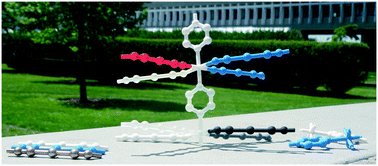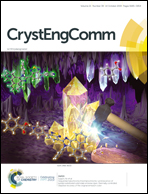Piecewise 3D printing of crystallographic data for post-printing construction†
Abstract
A method of 3D printing complex or challenging structures by breaking them into parts with connectors, printing each part separately, and then assembling the structure post-printing has been developed. This has advantages such as multicoloured printing, framework optimization and reduction, print time reduction, and can be used to bypass print tray size limits. This method is particularly applicable to extended structures such as coordination polymers, metal–organic frameworks, and hydrogen bonding networks, but examples where it can be used to simplify the printing of small molecules are also shown.



 Please wait while we load your content...
Please wait while we load your content...